

-
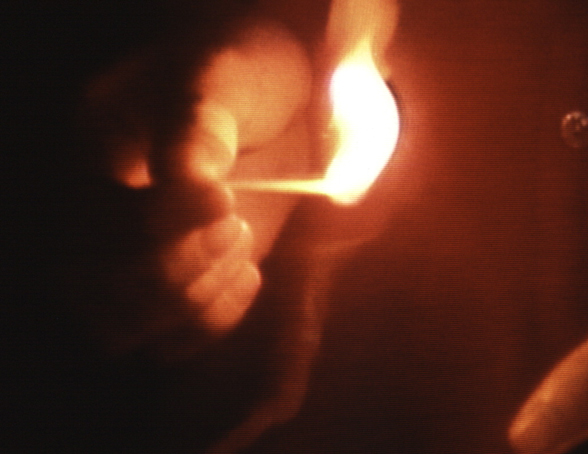
Hatsu-Yume (First Dream) (1981)
Bill Viola
An illusionary dream space full of images and sounds that slip away while pulling the viewer into new landscapes, Hatsu-Yume (First Dream) is a work that is a meditation on life and death through the darkness and light of the video frame. Shot in Japan in the early 1980s, this single-channel video feels slightly like a travelog through a foreign land. The journey that is taken is not touristic, however, but spiritual. The viewer witnesses many moments that bridge the reality of the world and what lies beyond; squid as they are fished from their life in the sea, visitors to memorials for the dead, light as it is refracted by the rain in the city. Although each of the instances, viewed separately, seem to be just slices of normal life, Viola creates a third space of time that is neither real nor otherworldly through deft use of montage and manipulation of speed of the audio and video.
Single-channel color video with sound, 56 min
Courtesy of Electronic Arts Intermix, New York. Photograph by Kira Perov -

Again and Again (The Borderer) (1998)
Bjorn Melhus
Bjørn Melhus creates a postmodern distopia of identical selves in Again and Again (The Borderer). Based within the concepts of identity and self, Melhus playfully questions contemporary forms of reproduction, from cloning to the replication of consumers across a society. Using a sample-based approach, Melhus cuts and pastes multiples of the main character (the artist himself) and excerpts audio from commercial television sources. Although the video's quick-moving construction is often humorous and campy, the filmmaker uses these tools to address serious issues in society as it continues down a path of creating the tools necessary for endless replications of all forms of life.
Color video installation with sound on 8 monitors, 6 min Dimensions variable
Courtesy Kunsthalle Bremen and the artist—Collection of Kunstverein Bremen, Germany. Photograph by Bjørn Melhus -

Again and Again (The Borderer) (1998)
Bjorn Melhus
Bjørn Melhus creates a postmodern distopia of identical selves in Again and Again (The Borderer). Based within the concepts of identity and self, Melhus playfully questions contemporary forms of reproduction, from cloning to the replication of consumers across a society. Using a sample-based approach, Melhus cuts and pastes multiples of the main character (the artist himself) and excerpts audio from commercial television sources. Although the video's quick-moving construction is often humorous and campy, the filmmaker uses these tools to address serious issues in society as it continues down a path of creating the tools necessary for endless replications of all forms of life.
Color video installation with sound on 8 monitors, 6 min Dimensions variable
Courtesy Kunsthalle Bremen and the Artist—Collection of Kunstverein Bremen, Germany. Photograph by Bjørn Melhus © Bjørn Melhus -
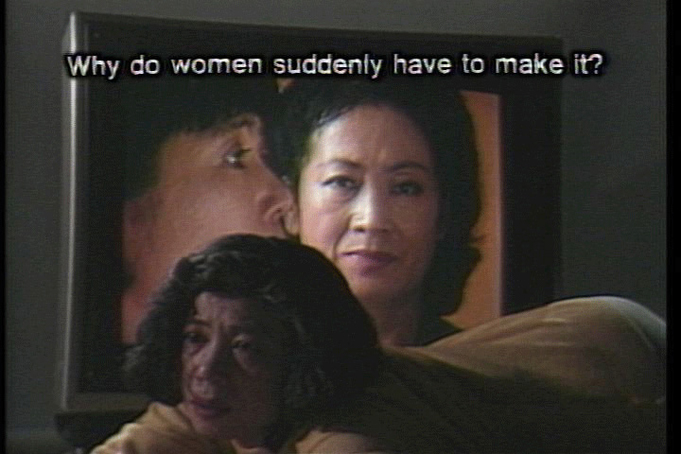
Kiyoko's Situation (1989)
Mako Idemitsu
Kiyoko’s Situation portrays a woman caught between the reality of her own life and the reality of life portrayed on television; neither being the life she actually wants to live. This feminist video depicts the difficulties of the ongoing struggle of contemporary women to find balance between social and domestic obligations and their own personal desires for their life. In the video, Tani is a wife, mother and artist who watches Kiyoko’s character on television deal with the exact same issues. Kiyoko gives up passion for domestic life in her television world, leading Tani to make a dramatic decision about her own future.
Single-channel color video with sound, 24:20 min Dimensions variable
Courtesy Electronic Arts Intermix, New York. Photograph by Mako Idemitsu © Mako Idemitsu -
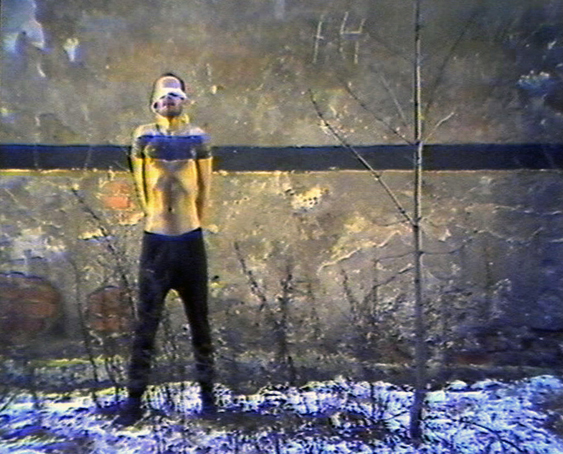
Deadline (1982-83)
Turpi Group
As pioneers in video art in their home country of Finland, the Turrpi Group, like many other early art pioneers, found themselves working within the intersection of performance art and new media. In Deadline, the Turrpi Group used this hybrid approach to create a work that addresses the changing landscape. A primary blindfolded figure interacts with broken rubble of buildings being demolished. His form becomes a symbol of the remaining bits of life in an environment that is being destroyed and transformed.
Video still
Photo courtesy of the artist -
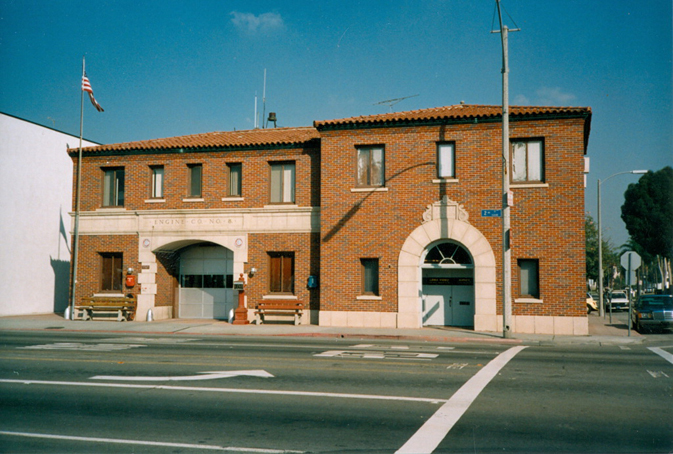
Long Beach Museum of Art Video Station (date unknown)
Photographer Unknown
The Station/Annex was a location operated by the Long Beach Museum of Art, which housed video editing and postproduction facilities, a video library, and a presentation space for artists to exhibit video work. In addition to being an active space for artists to use, the Station/Annex was also a location for community video workshops. The Station/Annex was active from 1975 to 1999.
Annex 5373 E. 2nd Street, Long Beach, California Courtesy Long Beach Museum of Art -
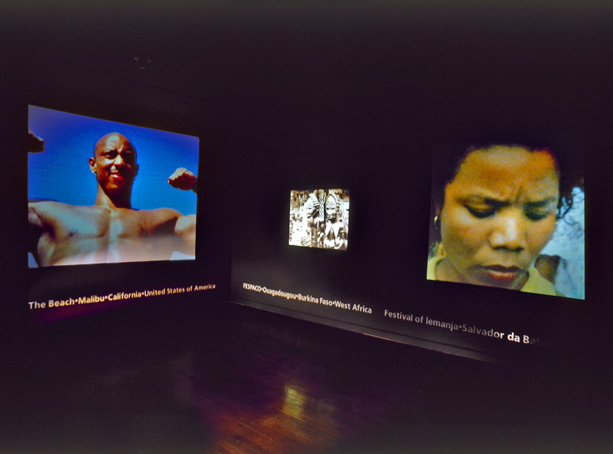
AFRO (is just a hair style): Notes on a Journey Through the African Diaspora (1999)
Thomas Allen Harris
Questions of identity, history, and interconnectedness are at the core of the work, AFRO (is just a hair style): Notes on a Journey Through the African Diaspora (1999) by Thomas Allen Harris. Traveling through three continents, Harris looks at the continued presence of the African Diaspora in the Untied States, Brazil, and Burkina Faso. The three-channel installation presents a different celebration in each projection: gay pride, a religious holiday, and a film festival. The montage of the material is lyrical; images and sounds pause, repeat, and fade in their own rhythm, capturing with sincerity the multitudes of people that find their ancestral roots partly in African culture. Harris, most well known as a documentary filmmaker, creates an installation that surrounds the viewer with scenes and sounds of people—often ignored or unnoticed by media lenses—in celebration within an artwork created by a member of the community.
Three-channel video installation, black-and-white and color, soundtrack, and text
Installation at Long Beach Museum of Art, 1999. Photograph by Eric Sueyoshi, courtesy of the artist -
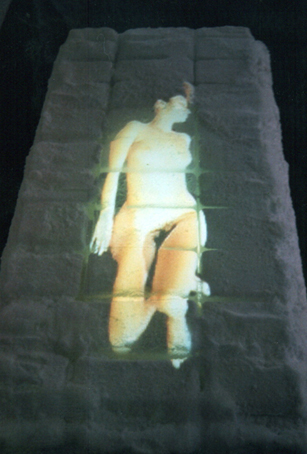
Frozen Images (1992)
Sanja Ivekovic
Frozen Images (1992), which begins with the sound of a woman breathing and then transitions into silence, actively invites the viewer's concerns for the form lying solitary in the middle of the cold and darkened room. In this installation, Sanja Ivekovi? uses a multisensorial approach to create an environment that both conceptually and physically resonates with the viewer by projecting a life-size nude female form on a raised bed of dry ice, a substance that is intensively cold and slow to evaporate. The Croatian artist (born in the former Yugoslavia), uses the vanishing materiality of the dry ice as a projection surface to comment on women in a state of vulnerability (both political and physical), and how they can disappear over time, unnoticed. The theme of the female form's presence and equally felt absence is a subject that Ivekovic explores in several of her works across many different media, including installations, performance, and photography.
Single-channel color video installation with sound Wood frame: 78.7 x 39.4 in., and thirty-six blocks of dry ice
Installation at Long Beach Museum of Art, 1994 Photo courtesy of the artist -

Die Einen den Anderen (1985–86)
Marcel Odenbach
Odenbach’s video Die Einen den Anderen (The One, the Others), 1985–86, is a compilation of footage set to a constantly changing soundtrack of classical, electronic, jazz, and other genres of music. Both the visual and aural elements of the work are characterized by jarring juxtapositions—from black and white to color, from German dinner party to a South American street—creating the effect of a collage or mosaic. The camera takes on its own agency; at the beginning of the video, it circles the artist’s apartment with a distractedly noncommittal gaze. The soundtrack seems independent of Odenbach’s actions and disrupts chronology. Imagery of high German culture is parodied by the surreal aesthetic: a subsequent montage is constantly punctuated by the pendulous swing of a chandelier of candles, prompting rhythmic swipe cuts apparently at random. The imagery of candles suggests two major concerns for the artist: the fracturing of historical imagery and the temporal nature of both past and present. This imagery is evocative of Odenbach’s own complex relationship to history and to the position of the individual therein: a theme that prevails throughout his artwork of various media.
Single-channel color video installation with sound
Image courtesy of Electronic Arts Intermix, New York -
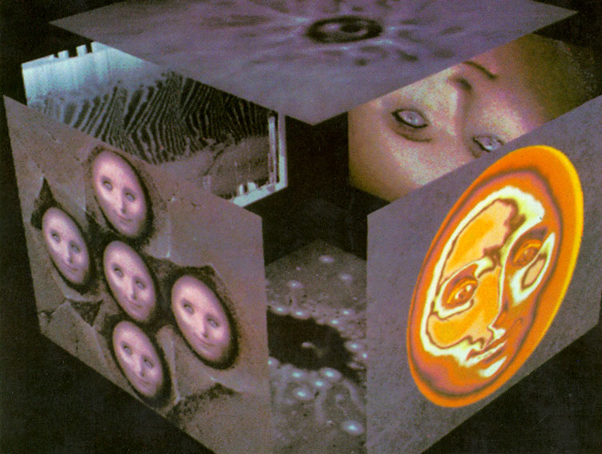
Sunstone (1979)
Ed Emshwiller
Sunstone, an early computer-generated work by Ed Emshwiller, presents a playful, poetic approach to age-old questions of awareness, both of the spirit, and of space and time. Using traditional animation techniques such as morphing, Emshwiller creates a space where nothing is what it seems: black-and-white images eventually give way to kaleidoscopic colors, 2D becomes 3D, and the image of the sun gains a mystic third eye. Emshwiller, an enthusiast of utilizing new technology within the realm of his art practice, spent months crafting this short work with cutting-edge tools to create a work that is both easily approachable, and full of meaning and depth.
Single-channel color video with sound, 3:55 min
Courtesy of Electronic Arts Intermix, New York. Photograph by Ed Emshwiller © Ed Emshwiller 1979 -

Kiyoko's Situation (1989)
Mako Idemitsu
Kiyoko’s Situation portrays a woman caught between the reality of her own life and the reality of life portrayed on television; neither being the life she actually wants to live. This feminist video depicts the difficulties of the ongoing struggle for contemporary women to find balance between social and domestic obligations, and their own personal desires for their life. In the video, Tani is a wife, mother, and artist who watches Kiyoko’s character on television deal with the exact same issues. Kiyoko gives up passion for domestic life in her television world, leading Tani to make a dramatic decision about her own future.
Single-channel color video with sound, 24:20 min
Courtesy of Electronic Arts Intermix, New York. Photograph by Mako Idemitsu © Mako Idemitsu -

City of Angels (1983)
Marina Abramovic/Ulay
Most strongly associated with their bold, physical performances, Marina Abramovic and Ulay, during the course of their personal and artistic relationship, also created several video works. In City of Angels, the artists free themselves from being performers and subject matter, instead focusing their gaze on the people of Thailand. Capturing the images of individuals in acts of ritual that echo some of the performance techniques they engaged in, Abramovic and Ulay created a work that is part ethnography and part poetic explorations of the moving image medium.
Single-channel color video with sound, 21:37 min
Video still courtesy of Sean Kelly Gallery, New York. Photograph by Marina Abramovic/Ulay © Marina Abramovic/Ulay -
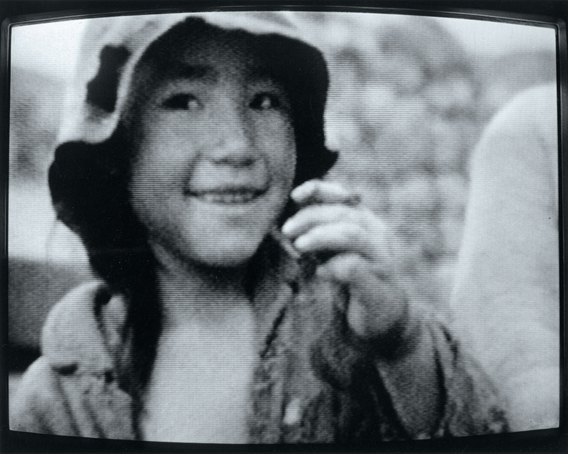
Inca (1976)
Juan Downey
Two-channel black-and-white video installation with sound, 22 min variable
Courtesy of Marylis Downey and the Getty Research Institute, Los Angeles -
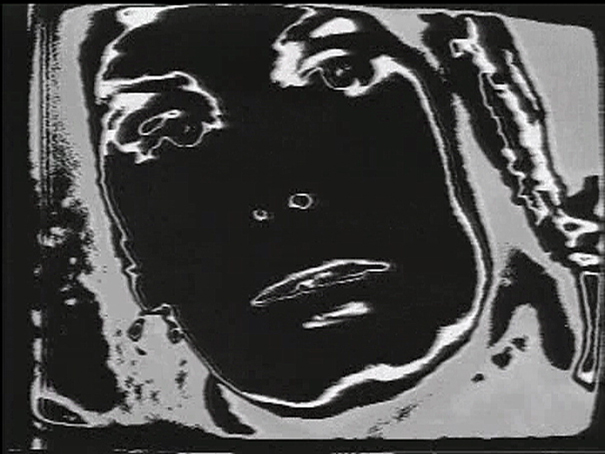
The Secret Life of Cornelia Lumsden: A Remarkable Story, Part 2: "And Now the Truth" (A Parenthesis) (1980)
Vera Frenkel
The Secret Life of Cornelia Lumsden: A Remarkable Story is a piece of a larger mystery created by artist Vera Frenkel, surrounding the identity of the figure of Cornelia Lumsden, a Canadian writer. Now acknowledged as a work of fiction, Frenkel took on the historical personae of Lumsden and created a body of artifacts, including videos, installations, and other items, to create the history of the imagined woman. In this video work Frenkel explores the ideas of the identity, truth, and history, and how all of these concepts interweave and affect one another to create a greater narrative for the viewer.
Single-channel video variable
Courtesy V-Tape, Toronto -
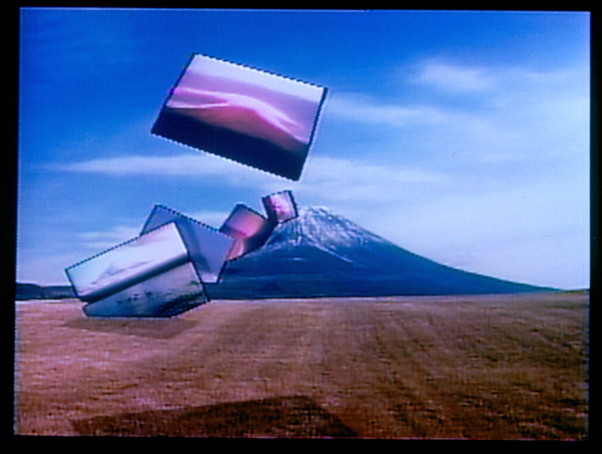
Mt. Fuji (Hiran) (1984)
Ko Nakajima
Single-channel video, 45 min
Courtesy of the artist -
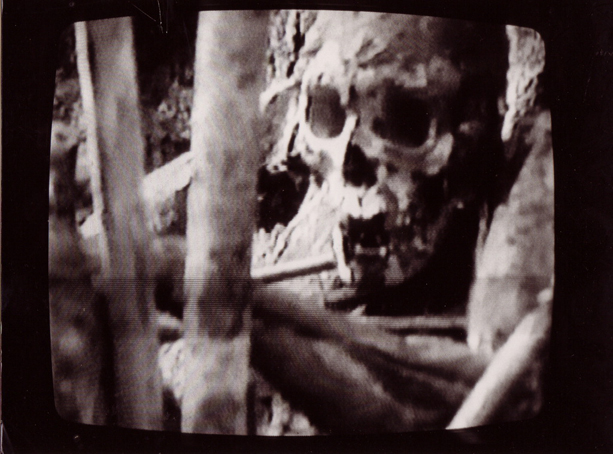
Headhunters (1992)
Terese Svoboda
Headhunters, a single-channel video, finds its truth in satire, creating an amusing tale of a young boy on a “head-hunting” journey in New Guinea. Headhunters was created as a comment on colonialism and the ethnographic films that record its effects. This video by Terese Svoboda, most currently known for her novels, uses the ridiculousness of the narrative to question positions of privilege in society. "There's a quaint saying in this country: To eat means to exploit," says the mother of the young traveler.
Single-channel color video with sound, 15 min
Courtesy of the artist
Long Beach Museum of Art (LBMA)
Exchange and Evolution: Worldwide Video Long Beach 1974-1999
As a hotbed of eclectic and experimental video production, LBMA provided opportunities for residencies and collaborations through its Video Annex program. Exchange and Evolution will include video installations that were produced locally by artists visiting from the Netherlands, Japan, Croatia, France, Germany, Spain, and the United States while exploring the impact of the early use of technology in the arts. Exchange and Evolution will also examine specific works by artists who have made major contributions to the history of video art. The exhibition will shed light on how LBMA facilitated an exchange of ideas with artists, curators and an international public long before museums relied on the World Wide Web to reach beyond geographic boundaries.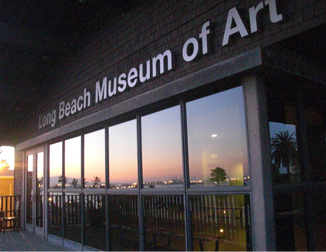
Long Beach, CA 90803















